Mexico achieved its independence in 1823 from the Spanish conquerors after a decade of struggle. A century of successive dictatorships allowed the owners of the great estates to adopt right wing policies of taking more and more land from the peasants. Military leaders such as Mariano Escobedo (1826-1902) channelled the great resentment of the people into revolution, which exploded later in 1910 under the great revolutionary leaders of Emiliano Zapata (1879-1919) and Pancho Villa (1878-1923). A stable Mexican Government was formed in 1917 under the politician Venustiano Carranzo, and a mixed economy was developed. The coal mines at Coahuila and Sabinas, the iron ore mines at Colima, the iron and steel plant at Monterrey, and the textile plants at Puebla and Orizaba remained in private hands, but the Mexican National Line (Lineas Nacionales de Navegacion) was formed to control the coastal shipment of coal and iron ore. The latter owned steamers of 4,000 dwt such as Coahuila, Jalisco, Mexico, Moctezuma and Bolivar, and one of these-Coahuila built in 1916 by the Cramp yard at Philadelphia along with her sister Jalisco-found their way in 1955 into the fledgling shipping company of entrepreneur Enrique Rojas, Transportes Maritimos Mexicanos.
The latter company was renamed as Transportacion Maritima Mexicana (TMM) on 18th September 1958, and shipping operations began to the Gulf and Atlantic coasts of both Mexico and the United States. A standard ‘Empire’ type of 10,000 dwt, Empire Stalwart, was purchased in 1958 and renamed Constitucion, and she served the new company for ten years until broken up at Vera Cruz in October 1968. The company was backed by the Serrano Segovia family and other private investors, and 30% of the equity was acquired by the Mexican Government in 1960 via the Bank of Mexico, and the National Bank of Foreign Commerce (National Financiera). The Mexican Line of Tharald Brovig, a Norwegian shipowner, was acquired in 1960 together with six of his general cargo ships with cooling and refrigerating capacity for the carriage of fruit. Tharald Brovig had become a shipowner at Farsund in 1905 and began his oil tanker fleet in the 1920s and his fruit carrier fleet in the 1930s. Five of the six ships were of 4,000 dwt and were renamed as Merida (ex Bertha Brovig), Campeche (ex Gunvor Brovig), Jalapa (ex Kirsten Brovig), Monterrey (ex Bennestvet Brovig) and Toluca (ex Gezina Brovig).
The sixth Brovig vessel was renamed Guadalajara (ex Balla) but was a motor vessel very well known in South Wales waters. She was launched in 1923 at the Bristol yard of Charles Hill & Sons Ltd. as Margretian of the Golden Cross Line of Owen and Watkin Williams of Cardiff. She was a five hold engines aft vessel of 4,000 dwt and a pioneer of the bulk carrier along with her larger sister Silurian of 10,000 dwt completed in 1924 by the Blythswood yard on the Clyde. Margretian had an overall length of 314 feet and a moulded beam of 43.6 feet, and had her third replacement diesel engines installed in 1948 manufactured by the Hamilton plant of the General Machinery Corporation to drive her single propeller. She had five holds with the officers and navigation bridge ‘midships and ten derricks on two masts and a set of posts. She gave eight years of coastal trading to TMM and was broken up in Mexico in 1969.
A Pacific coast liner service to Central and South America was begun in 1961, and regular Transatlantic services in 1963, followed by regular Mediterranean and Far East services in 1968. The first quartet of new purpose built TMM motor vessels came from the Emaq yard and the IHI de Brasil yard in Rio de Janeiro. The coastal Chihuahua and Saltilla of 3,000 dwt were completed in 1963, and the closed shelterdeckers El Mexicano and Puebla of 12,913 dwt were completed in October 1964 and February 1965. The latter pair had dimensions of length 477.4 feet, moulded beam of 64.1 feet, with a fo’c’stle of length 38 feet. They were engines aft motor vessels of four holds served by 18 derricks of forty, twenty five and five tonnes capacity. They had refrigerated capacity and a service speed of sixteen knots from a two stroke seven cylinder Sulzer diesel engine of 7,700 bhp. Two war built engines aft CI-M-AV1 types were purchased in 1966 and renamed Aguascalientes (Warm Waters in Spanish) and Tiaxcala, the latter sinking in a storm off Vera Cruz on 19th December 1975
A fleet of fourteen owned motor vessels was operated by TMM in 1973, together with a further eighteen chartered vessels. This fleet was of over 250,000 dwt and visited 54 ports each year, voyaging over one million nautical miles and transported 1.5 million tonnes of cargo each year. A regular service to Brazil began in 1974, and TMM became the largest shipping company in Latin America for over forty years. The fleet included the self unloading cement carrier Anahuac II of 9,992 dwt and completed in July 1969 by the Astilleros of Cadiz yard at Seville. She had an overall length of 394 feet and moulded beam of 70 feet with twin two stroke eight cylinder Sulzer diesel engines powering two controllable pitch propellers. Two general cargo ships with container capacity were completed in 1971 by the Brodogradiliste yard in Yugoslavia as Monterrey and Toluca of 16,392 dwt. They were engines aft vessels with six holds and were strengthened for the carriage of ore and also had deep vegetable oil tanks. They had fixed guides in some of the holds for the carriage of containers, and were powered by a two stroke seven cylinder Sulzer diesel of 20,300 bhp to give a service speed of 15 knots.
Azteca and Maya were bulk carriers of 26,072 dwt completed in 1969 by the Stocznia Szczecin yard in Poland with their holds served by three cranes on moveable gantries. They had service speeds of sixteen knots from powerful six cylinder Sulzer diesel engines. Another interesting owned vessel was the fruiter Sonora of 5,355 dwt built in 1955 by the Helsingor Skibs yard in Denmark as Corneville for A. F. Klaveness of Oslo. She was purchased in 1971 and renamed Gina Maria at first as TMM was using the names of girls at that time, and then renamed Sonora in 1977. She had a service speed of 16 knots from a six cylinder diesel engine by the builders of 4,700 bhp.
A twenty five year management relationship began in 1972 between TMM and the Cardiff tramping company of Reardon Smith Line (RSL). Capt. William Reardon Smith (1856-1935 and knighted in 1920) came ashore in 1905 after a long career at sea and began owning deep sea tramps. He managed one of the greatest of all of the big British tramp fleets with over 150 tramps owned over eighty years until 1985. The Technical Department of Reardon Smith Line became Cardiff Ship Management and Services in 1985, principally managers of the TMM fleet with twenty people employed in the Cardiff office, and many other British seafarers seconded to TMM vessels or to stand by as supervision of build staff at shipyards for new TMM ships. The close association of these two companies grew and developed to the mutual benefit of both companies.
The sister tramps Cardiff City and Houston City of 15,375 dwt, completed by the Pallion yard of William Doxford & Sons Ltd. at Sunderland in 1962/63 were sold in November 1972 to TMM and renamed Sara Lupe and Maria Elisa respectively with management retained by RSL. They operated on the U.S. Gulf to European ports or to the east coast of South America service until they were sold in 1980. Two five hold engines aft cargo-liners were purchased from Cherry Heering A/S of Denmark and renamed Amparo and Elena in 1974, while a German ‘Liberty’ replacement type was purchased in 1976 from Hilmar Reksten of Norway and renamed Josefa. The cargo-liner Southgate was on long term charter to TMM as Gela from March 1970 for voyages between the Mexican Gulf and Northern Europe, but was managed by Turnbull Scott Management until 1972 when replaced by RSL, and the coasters Monica and Tere of 2,950 dwt from Turnbull Scott were also on charter to TMM for voyages from Manzanillo to Latin American ports. The latter pair had a supercargo on board, the charterer’s representative, to supervise the working of cargo.
The last vessel built for Donaldson Line, Letitia of April 1961, was sold to Brandts Leasing in 1967 and chartered to TMM as Bibi and then purchased in 1977 and renamed Tepic. The fleet of owned and long term chartered TMM ships were engaged on the following voyages in October 1978:-
Amparo on passage Hong Kong to Mizushima
Anahuac II trading Mexican ports with cement
Atlantic on passage Montreal to La Spezia
Azteca arrived Coatzacoalcos from Hamburg
Campeche on passage Puntarenas to Guayaquil to load fruit
El Mexicano on passage New Orleans to Bremerhaven
Elena on passage Hong Kong to Salina Cruz
Gela on passage Coatzacoalcos to Antwerp
Jalapa on passage Antofagasta to Iquique
Josefa on passage Buenos Aires to Boston
Maya on passage Tampa to Coatzacoalcos
Monterrey on passage Santos to Vera Cruz
Maria Elisa on passage Hamburg and Liverpool to Tampico
Sara Lupe on passage Barcelona and New Orleans to Vera Cruz
Toluca on passage Paranagua and Santos to San Juan
Puebla on passage Vera Cruz to Rotterdam and Gothenburg
Sonora on passage San Carlos to Guayaquil to load fruit
Tepic on passage New York and Philadelphia to Progreso
Tepic was sold in 1985 and renamed Tepora and later that year was abandoned on fire and sank 450 miles south of New Orleans while on a voyage to Vera Cruz. Two similar small ships of 8,814 dwt were purchased in 1979 and renamed Bocha and Gloria for the petroleum coke and alumina trade from Point Comfort in Texas to the aluminium works at Vera Cruz. This pair had three holds and three hatches and had been built at Gijon eight years before their TMM purchase and had a high service speed of 18 knots. Toluca was renamed Tula in 1986 but after sailing from Tampico on 28th December 1986 for Genoa she suffered an alternator explosion with her engine room and her aft hold flooded. She arrived at Mobile five days later and was declared a constructive total loss and was sold for breaking up at Kaohsiung.
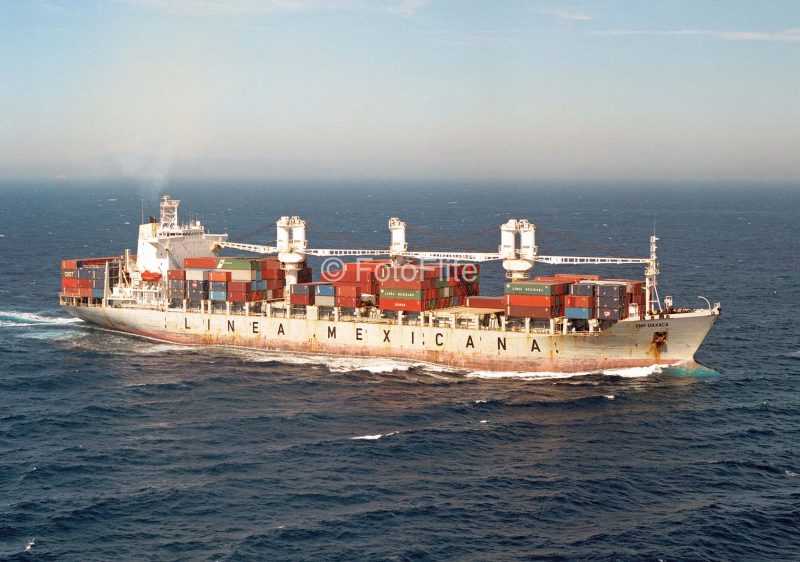 Four large RSL bulkers were then purchased by TMM with management retained by RSL. Atlantic City at 46,550 dwt was the largest and dated from 1967 and was renamed Olmeca in 1979 and had been on long term charter to TMM from 1976 as Atlantic, while the second, third and fourth of a class of seven bulkers of 26,300 dwt were renamed as Yaqui (ex Prince Rupert City), Lacandon (ex Victoria City) and Olmeca (ex Fresno City) in 1982/83.
Four large RSL bulkers were then purchased by TMM with management retained by RSL. Atlantic City at 46,550 dwt was the largest and dated from 1967 and was renamed Olmeca in 1979 and had been on long term charter to TMM from 1976 as Atlantic, while the second, third and fourth of a class of seven bulkers of 26,300 dwt were renamed as Yaqui (ex Prince Rupert City), Lacandon (ex Victoria City) and Olmeca (ex Fresno City) in 1982/83.
One large bulker of 122,435 dwt was engaged on the export salt trade from Cedros Island off Baja California to Japan and was not managed by RSL. Cedros Island is separated from Baja California by the one hundred kilometres of Sebastian Vizcaino Bay, and has a salt transhipment facility at its southern tip at Morro Redondo. Barges bringing the salt from evaporation ponds at Guerrero Negro on Baja California are transhipped into deep sea bulkers. The vessel purchased in 1983 for this trade was Chokai Maru, renamed as Guaicuri, with an overall length of 261 metres and a moulded beam of 40.6 metres with nine holds and a service speed of 15.5 knots from a two stroke single acting nine cylinder diesel engine of 26,600 bhp.
Guaicuri operated the salt trade for six years, by which time two further bulkers of 46,650 dwt were in service for TMM as Colima and Mitla from the Deptford yard of Sunderland Shipbuilders Ltd. I was fortunate to be invited to the launch of both of these bulkers, which were launched downstream from the slipways of the Deptford yard and were brought to a stop by very heavy chains. Mitla was launched on 3rd May 1985 and was the last launch from the yard, and she and her sister had eight holds and eight hatches served by five cranes of 36 tonnes capacity. They served TMM for eleven and fourteen years respectively in the bulk Pacific trades from Mexican ports such as Manzanillo, and Guaymas in the Gulf of California. The latter port was founded in 1769 by the Spanish conquerors and is a bustling port exporting salt across the Pacific.
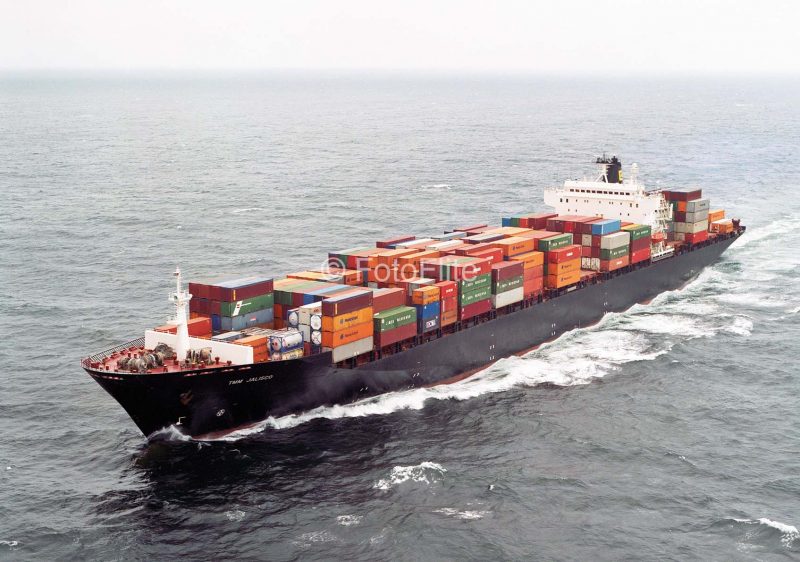 MULTI-PURPOSE & CONTAINER SHIPS
MULTI-PURPOSE & CONTAINER SHIPS
Five multi-purpose general cargo ships were completed for TMM by the Innoshima yard of Hitachi, two of which were managed by RSL. The latter pair were Bibi and Silvia Sofia, and their trio of sisters were Barbara Mariana, Gina Luisa and Sarita. Bibi was launched first on 2nd November 1978 and Sarita was launched last on 19th February 1980. RSL staff supervised the building of all five of 22,337 dwt and 17,128 grt and equipped with a 250 tonne heavy lift Stulcken derrick and five pedestal cranes of twenty tonnes capacity to serve their five holds and nine hatches. They could carry 816 TEU of containers in the holds and on the hatches, and the quintet had service speeds of nineteen knots on the Transpacific routes from Mexican and American Pacific ports to Japan from eight cylinder two stroke single acting B & W oil engines of 15,000 bhp. An option for a sixth sister was not taken up and problems with the quintet that were completed saw the builder retro-fitting thrusters to the class at their own expense. Silvia Sofia was renamed Merida in 1987, and Sarita sank on 16th April 1994 when renamed Tabasco after steel coils in her cargo broke loose in her ‘tween decks in heavy weather in the Atlantic while on a voyage from Spain and badly holed the vessel. The remaining quartet found their way into the Rickmers of Bremerhaven fleet for their Round the World service, Bibi becoming Rickmers Dubai.
In 1985, TMM was operating a big fleet of thirty owned ships with many more on charter, and with the help of the Mexican Government in directing public sector shippers to TMM, the fleet grew in size. In the same year, an air freight subsidiary was added and a rail service across the Isthmus of Tehuantepec from Salina Cruz to Coatzacoalcos as an alternative to shipping through the Panama Canal. In 1990, Ensenada, only 65 miles from the American border and home to electronic and other assembly plants, was added as the first Mexican port of call after Long Beach on the Transpacific trades. In that year of 1990, TMM revenue soared to $402 million with a fleet of 35 owned ships and many more on charter transporting four million tonnes of bulk cargo per year, together with half a million TEU of containers and 100,000 cars transported per year. TMM and CGM agreed to co-operate on their liner services between Northern Europe and Mexico from the end of 1990.
The export of Japanese cars and autoparts to Long Beach had begun for TMM in 1983 with the car carrier Lerma and Japanese clients such as Nissan, and return voyage shipment of cars to Japan produced by the American car companies of Ford, General Motors and Chrysler. TMM purchased more car carriers including Aguascalientes, Aya II, Atlixco, Guanajuato and Tepozteco II, the latter acquired from Nissan in 1994 as Nissan Bluebird with a capacity for five thousand cars. The pioneer big car carrier Oppama Maru completed in 1990 was purchased in 1991 and renamed San Marcos with capacity for 5,900 cars.
Four large container ships of 2,400 TEU capacity were then ordered in 1991 from the Astilleros Espanoles yard in Bilbao for completion in 1994 as Nuevo Leon, Sonora, Yucatan and Mexico. They had dimensions of length overall of 202 metres, moulded beam of 32.26 metres and a fo’c’stle of length 24 metres. They had five cellular holds with fixed guides with containers loaded through ten hatches, and service speeds of twenty knots from seven cylinder two stroke single acting B & W oil engines of 26,750 bhp. They served on the Pacific routes from Far East ports to Mexican ports, and on Atlantic routes from European ports to Mexican and American ports. They operated in conjunction with the container ships TMM Cozumel, TMM Guadalajara, TMM Leon and TMM Oaxaca with capacities of up to 2,075 TEU. The grey hulls with ‘LINEA MEXICANA’ in black, and green or red boot topping were now seen worldwide.

TMM teamed up in 1993 with container shipping market leader Hapag-Lloyd, the fifth biggest container ship fleet in the world, to form a formidable strategic alliance on the North Atlantic routes. TMM provided four of the six container ships of 1,600 TEU in the joint service, and larger container ship tonnage was then introduced into the joint Hapag-Lloyd/TMM/Tecomar service in 1994. APL and Matson Lines also made an alliance with TMM in 1993 for a direct slot exchange deal between Asia and Mexico, and a Mediterranean route alliance was formed with Contship Container Line in 1998. The trio of con/bulkers with eight cellular holds of Toluca, Oaxaca and Monterrey of 41,775 dwt, completed in 1988 by the famous St. Nazaire yard of Chantiers de l’Atlantique and the Normed yard at La Ciotat, could also carry two thousand TEU of containers on worldwide container routes. Oaxaca was renamed TMM Oaxaca in 1997 for a Vera Cruz and Miami container service to Mediterranean ports.
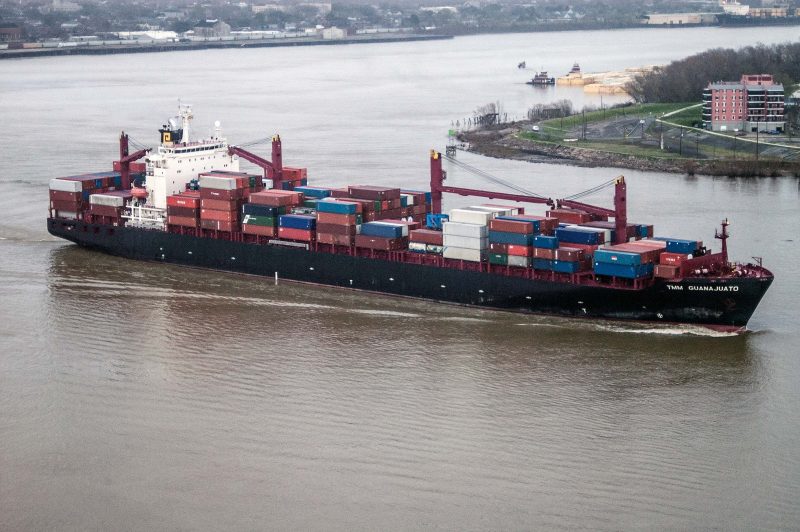 TMM PEAKS AND WITHDRAWS FROM SHIPPING
TMM PEAKS AND WITHDRAWS FROM SHIPPING
Jose Serrano Segovia became Chairman of TMM in 1991 following the 30% purchase of TMM common stock by Grupo Servia earlier that year. The Chairman was assisted by his nephew, Ignacio Serrano Segovia, and an IPO (Initial Public Offering) at the end of that year raised $91 million. A $650 million investment was then made in shipping including the purchase of a product tanker fleet. A seven year contract was obtained for the tanker fleet to carry petrochemical products for Pemex (Petroleos Mexicanos) together with a five year contract to carry Pemex oil in tankers such as Anahuac of 32,148 dwt, Monte Alban and Palenque of 37,583 dwt, and Uxmal of 9,600 dwt. A joint venture was entered into at the same time with J. B. Hunt Transport Inc to ship goods by rail over the Mexican and U.S. border over the next ten years. In 1993, the shipping company of Tecomar S.A. was acquired to begin vessel slot sharing between three Mexican ports, two Texan ports and seven European ports with five ships sailing at eight day intervals. In 1995, a twenty year concession was awarded to TMM by the Mexican Government to operate the important Mexican Pacific port of Manzanillo in Central Mexico, as well as a multi-purpose terminal at Acapulco, 400 miles south of Manzanillo, and the cruise terminal at Cozumel on the Caribbean coast.
Port facilities at Tampico, Tuxpan and Vera Cruz were added in 1996 with the collaboration of Tecomar S.A., and large shipments of tequila, rum and brandy were made in conjunction with the Allied Domecq Group. TMM then renegotiated its Transpacific shipping arrangements with a direct service between Mexican Pacific ports and East Asia with no calls at Long Beach. Ensenada became a major port of call for TMM with its proximity to the leading television production plants at Tijuana, with parts shipped direct from Japanese and Korean parts manufacturers, and a rail link to Mexico City using double stack container trains carrying electronics and other consumer goods.
The size of the TMM fleet peaked in 1997, and the Mexican owned and long term chartered vessels were engaged on the following voyages in June of that year :-
Aguascalientes on passage Oranjestad to Vera Cruz
Anahuac on passage Coatzacoa- lcos and Vera Cruz to Houston
Aya II on passage Kawasaki to Spain via Suez
Bibi on passage Buenav- entura to Manzanillo
Guanajuato on passage Iquique and San Antonio to Manzanillo
Leon on passage Balboa to Guayaquil
Merida on passage Port Kelang to Yanbu
Monte Alban on passage Balboa to Salina Cruz
Nuevo Leon on passage Thamesport and Le Havre to Charleston
Palenque on passage Guaymas to Balboa
Sonora on passage Bremerh- aven to Vera Cruz
TMM Acapulco on passage Manzanillo and Los Angeles to Yokohama
TMM Chetumal on passage Kaohsiung to Los Angeles
TMM Jalisco on passage Buenav- entura to Caldera
TMM Manzanillo on passage Hong Kong and Yokohama to Los Angeles
TMM Mexico on passage New Orleans and Charleston to Antwerp
TMM Oaxaca on passage Vera Cruz and Miami to Valencia TMM Sinaloa on passage Los Angeles to Kobe and Kaohsiung
TMM Tuxpan on passage New Orleans and Houston to Antwerp
TMM Veracruz on passage Hong Kong and Yokohama to Los Angeles
Uxmal on passage Coatzacoalcos to Houston
Yucatan on passage Bremerhaven and Le Havre to Charleston
 However, TMM by 1999 was considered too small a container carrier to remain in international shipping. At the end of 1998, Americana Ships Inc. was established by TMM and CP Ships of Canada in a joint venture of forty ships of 150,000 TEU capacity with a revenue of $1.2 billion per year. The joint venture was ranked among the top fifteen container shipping lines globally, and was headquartered at Tampa (Florida) with equal number of directors from each company. The routes served linked Mexico, Central and South America with North America, Europe and Asia. TMM Lines contribution included all of their subsidiaries, including Tecomar (acquired in 1993), Transportacion Maritima Gran-Colombiana of Colombia (acquired in January 1997 for $20 million to give a dominating presence in Latin America), and Compania Trasatlantica Espanola of Barcelona (acquired later in 1997), as well as Lykes Lines contribution from CP Ships. However, a year later at the end of 1999, CP Ships acquired the remaining 50% TMM share in Americana Ships Inc. for $270 million, leaving TMM with tankers in the Mexican domestic oil products trade together with rail, port and towage businesses. The TMM product tankers were on charter to Celanese Mexicana S.A. to ship one million tonnes of products per year from Coatzacoalcos to Houston.
However, TMM by 1999 was considered too small a container carrier to remain in international shipping. At the end of 1998, Americana Ships Inc. was established by TMM and CP Ships of Canada in a joint venture of forty ships of 150,000 TEU capacity with a revenue of $1.2 billion per year. The joint venture was ranked among the top fifteen container shipping lines globally, and was headquartered at Tampa (Florida) with equal number of directors from each company. The routes served linked Mexico, Central and South America with North America, Europe and Asia. TMM Lines contribution included all of their subsidiaries, including Tecomar (acquired in 1993), Transportacion Maritima Gran-Colombiana of Colombia (acquired in January 1997 for $20 million to give a dominating presence in Latin America), and Compania Trasatlantica Espanola of Barcelona (acquired later in 1997), as well as Lykes Lines contribution from CP Ships. However, a year later at the end of 1999, CP Ships acquired the remaining 50% TMM share in Americana Ships Inc. for $270 million, leaving TMM with tankers in the Mexican domestic oil products trade together with rail, port and towage businesses. The TMM product tankers were on charter to Celanese Mexicana S.A. to ship one million tonnes of products per year from Coatzacoalcos to Houston.
Javier Segovia Serrano had outlined a plan in March 1999 for a new vision for TMM to increase diversification and seek revenue from the non-maritime sector. After the sale of its container ship fleet at the end of 1999 to CP Ships, the latter company ordered three large container ships of 3,200 TEU plus 400 refrigerated TEU from the yards of the China Shipbuilding Corporation for delivery at the end of 2002 and beginning of 2003. They were given ‘TMM’ prefixes as TMM Colima, TMM Guanajuato and TMM Yucatan and served on a weekly Mexico to Asia Express service, later moving to a Mexico to east coast South America Express service. The latter called at Houston, New Orleans, Miami, Vera Cruz, Altamira, Puerto Cabello, Port of Spain and south to Salvador, Rio de Janeiro, Vitoria, Santos, Rio Grande, Itajai, Montevideo and Buenos Aires. CP Ships had a fleet of sixteen container ships in 2005 with ‘TMM’ prefixes including TMM Aguascalientes, TMM Campeche, TMM Chiapas, TMM Durango, TMM Ensenada, TMM Hermosillo, TMM Hidalgo, TMM Jalisco, TMM Monterrey, TMM Oaxaca, TMM San Antonio, TMM Sinaloa and TMM Tabasco. However, the ‘TMM’ prefixes disappeared in 2005 with the sale of CP Ships to Hapag-Lloyd, all of the big CP ships fleet being renamed with names ending in the suffix ‘Express’. The chartered TMM Hidalgo kept her name for a few months more until the end of her charter. There were seven famous shipping names that disappeared into maritime history after the sale to Hapag-Lloyd in 2005. They were TMM (although resurrected as TMM Group), Canada Maritime, Cast Lines, Lykes Lines, Contship Container Line, ANZDL and Italia Line.
TMM merged with Grupo Servia in 2001 to form the TMM Group, and during its last year of independent operation it had a turnover of one billion U.S. dollars. However, four fifths of this was from the profitable rail, ports and logistics businesses, with the TFM rail subsidiary of TMM Group shipping 60% of all rail traffic from Mexico to the U.S.A. In reality, only 17% of the revenue came from maritime sources, with the major part of this from operating tug fleets in Acapulco, Ensenada, Manzanillo, Progreso, Tuxpan, and Vera Cruz. Sixteen tugs were owned or chartered from Grupo Boluda of Valencia, which managed the entire tug fleet. A few years later at the end of 2007, TMM Group returning to coastal Mexican trading with general cargo ships and feeder container ships, however these were all chartered in and not owned. The cruise terminal and car handling terminal at Acapulco are managed, and the general cargo and container terminal at Tampico. Ships agencies, customs brokerage and port services are also operated at Vera Cruz, Cancun, Comodoro Juarez, Guadalajara, Puebla, Tijuana, Ensenada and Altamira.
MEXICAN OFFSHORE OIL
TMM Group Offshore took delivery of a double hull FPSO (Floating, Production, Storage and Offloading vessel in 2008 for an oil field in the Gulf of Campeche in the southern U.S. Gulf. She was built by the Turkish yard of Yardimci Tersanesi A.S. at Tuzla and was immediately converted from a products tanker into a FPSO named Eco III. She has a central main tank with a dozen wing tanks and thirteen cargo pumps each of 300 cubic metres per hour capacity. She is of 8,825 dwt with an oil production of 15,000 barrels per day, gas production of 32,000 cubic metres per day and oil storage capacity of 55,000 barrels. She has a blue hull, two funnels with a helicopter pad projecting out over her stern, and length of 115 metres, beam of 21 metres, depth of 9.5 metres and draft of 6.5 metres. She is registered at her base of Dos Bocas in Tabasco province in southern Gulf of Campeche, and is powered by twin Wartsila 6L32 diesels of 3,675 bhp driving twin directional propellers at a service speed of 14 knots. She is equipped with thrusters for dynamic positioning over oil wells, and an exact sister with identical capacities named Eco IV is currently under construction.
TMM has also built up a large fleet of thirty oil rig supply vessels to service the Mexican offshore oil industry with Isla Grande the biggest at 2,871 grt but also including Isla Arbeola, Isla Arcas, Isla Arena, Isla Azteca, Isla Balena, Isla Blanca, Isla Ciari, Isla Clarion, Isla Cozumel, Isla Colorada, Isla Creciente, Isla del Carmen, Isla de Cedros, Isla del Toro, Isla de Lobos, Isla Guadeloupe, Isla Janitzio, Isla Leon, Isla Mayanita, Isla Miramar, Isla Monserrat, Isla Montague, Isla Pelicano, Isla San Gabriel, Isla San Ignacio, Isla San Luis, Isla Santa Cruz, Isla Tiburon, and Isla Verde. Isla Balena is a former North Sea oil rig supply vessel, built in 1983 by Goole Shipbuilding Ltd. as Fort Good Hope. There are also two owned crude oil tankers to transport the crude to shore in Maya of 12,450 dwt and Olmeca of 15,450 dwt, and both built by a yard at Fukuoka in Japan during 2003. TMM has also four product tankers to transport refined oil products in Palenque II, Tajin, Tula and Tulum, and all of 47,000 dwt and built or purchased since 2008.
TMM has thus been involved in shipping operations of one sort or another for sixty years. TMM Group had sold its rail subsidiary TFM (Transportacion Ferroviaria Mexicana) for $600 million in July 2006, and earmarked $200 million of this for expansion in the maritime sector especially in the offshore Mexican oil industry and its ports and towage businesses. The money was partly spent on fifteen new oil rig supply vessels ordered on 30th September 2008 from Alabama and Louisiana yards, and the TMM Group returned strongly to profit at the end of 2009 as a result of big currency gains. On 31st January 2012, TMM Group acquired a shiprepair yard at Tampico for the repair of its offshore fleet in two dry docks of 3,000 tonnes capacity. Further new expansion in its offshore oil division in 2016 will come from the entry into service of the FPSO Echo IV and a sister to FPSO ECO III completed in 2008. TMM Group has three bases in Mexico, the headquarters in Mexico City, and offices in Ciudad del Carmen (Campeche) and at Dos Bocas (Tabasco).
POSTSCRIPT
TMM vessels were very regular callers at the two busiest Mexican ports of Manzanillo on the Pacific coast and Vera Cruz on the Caribbean coast. Manzanillo in fact is the busiest port in Mexico in terms of tonnage with large numbers of merchant and naval vessels arriving at its arc of three bays in the Bay of Manzanillo, the Bay of San Antonio and Cenicero Bay. Vera Cruz dates back to the time of Colon (Christopher Columbus), but was founded on Good Friday 21st April 1519 by Hernan Cortes and within two years he had crushed the Aztec empire. It was occupied in 1914 by U.S. troops halting a delivery of German arms to dictator Victoriano Huerta, and three years later it became the capital of the reforming government of Venustiano Carranza. Today it is a bustling port with a dozen piers handling exports of manufactured goods and petrochemicals.
Surprisingly, there had been a Mexican Transatlantic passenger line back in the 1880s. This was Compania Mexicana Trasatlantica of Vera Cruz, for which the first of three twin funnelled three masted passenger liners named Mexico began a service in May 1884 on a route from Vera Cruz to the West Indies, Bermuda, Coruna and Liverpool. Mexico and her two sisters, Oaxaca and Tamaulipas, were built by the famous Glasgow yard of Robert Napier & Sons on dimensions of length 400 feet, moulded beam of 44 feet and depth of 23.1 feet and gross tonnage of 4,304. They were powered by three cylinder compound steam engines to give a service speed of 14 knots, and had accommodation for 990 passengers, of which 784 passengers were accommodated in huge dormitories in the holds. Unfortunately, the line was immediately unprofitable but continued sailing until 1886 when the trio were put up for sale by the receivers at Liverpool. They were acquired by La Veloce of Italy for £186,000 and renamed as Duchessa di Genova, Duc di Galleria and Vittoria respectively and ran on their Genoa to South America service or Genoa to New York service until 1906 when Duchessa di Genova and Duc di Galleria were broken up. Vittoria, however, had caught fire on 11th January 1899 off the Spanish coast while en-route from Genoa to Buenos Aires and was beached near Alicante and then towed back to Genoa and broken up. A very sad end for one of this trio of handsome passenger liners, and originally built for a short lived Mexican Transatlantic passenger company.

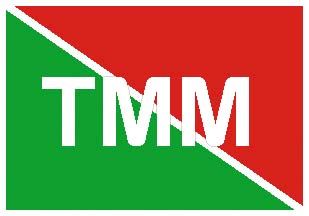
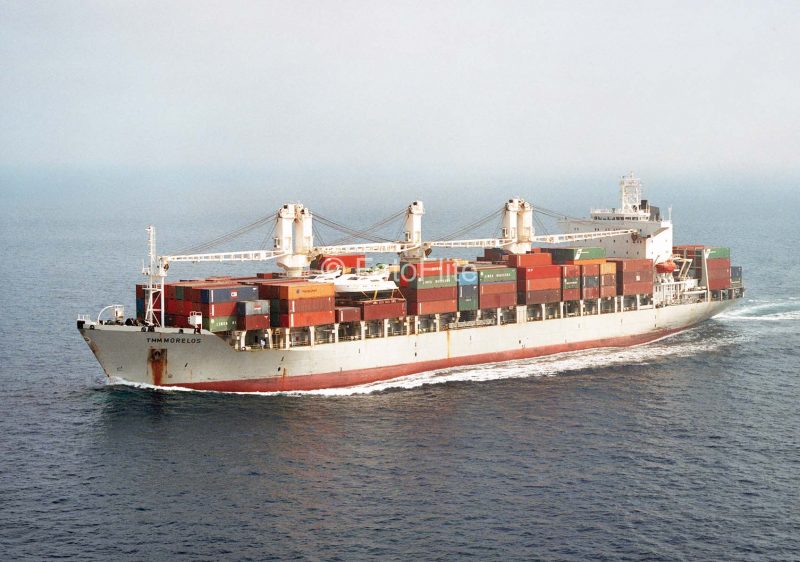
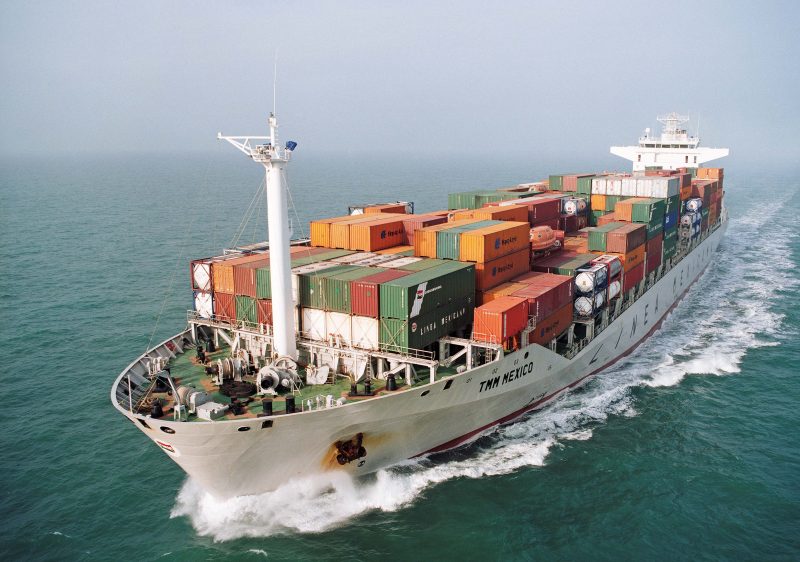

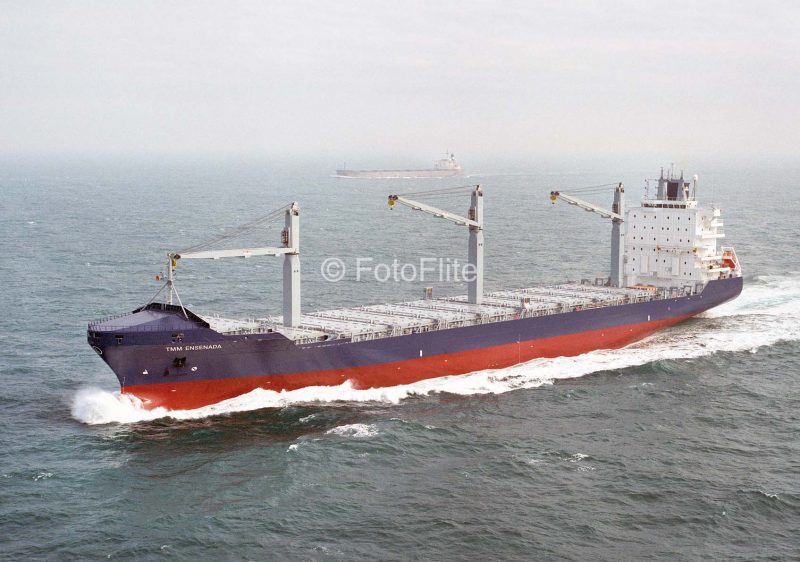

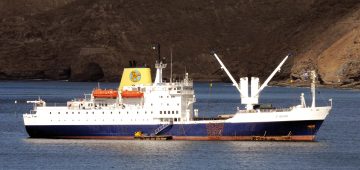
Comments
Sorry, comments are closed for this item